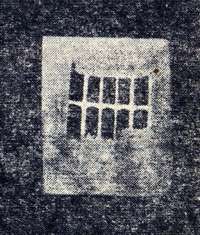The History of Photography: Talbott’s Pictures
Talbot William Henry Fox (1800-1877) was an English physicist, chemist, and the inventor of negative-positive process of photography (calotypy). He was also engaged in mathematics, spectroscopy, astronomy, archeology and linguistics.
During the years of his study in Harrow and Trinity College (Cambridge) Talbot published a lot of articles in the area of mathematics, astronomy, and physics. In 1833-34 he served in the Parliament.
Talbot tried to copy nature views with the help of a camera obscura. But he could not draw. That's why he wanted to fix an image he saw in the camera obscura. Talbot knew that light can influence the behaviour of various materials and invented such a photosensitive material. In order to do that he dipped a sheet of paper into weak saline solution and then into silver nitrate solution. These operations produced silver chloride on paper and it became photosensitive.
In 1835 Talbot made pictures on his argentic chloride sodden photosensitive paper with the help of a camera obscura. The first picture he made was of a barred window in his house. The exposure took about an hour. Thus he produced the first negative in the world. He placed another such sheet of paper against the first one and exposed them. In such a way, Talbot made a positive imprint. First pictures were dark, unclear, and spotty; and paper photosensitivity was very low as well.

In January of 1839, Talbot came to know that Arago made a report about L. Daguerre's invention, daguerreotype, in the Science Academie in Paris. This prompted Talbot to publish a report of his own process. In the end of January of the same year, he asked Faraday to show his works in the London Royal Society conference. On January 31, 1839, he reported "An Account of the Art of Photogenic Drawing or the process by which natural objects may be made to delineate themselves without the aid of the artist's pencil". He was afraid Daguerre's invention would be the same as his own and did not want to lose priority. But he did not realize that Daguerre's invention was completely different.
John Herschel called Talbot's invention photography and put into circulation such words as 'negative' and 'positive'.
In 1840 Talbot changed and improved his process. It let him make a photo within a few minutes. He named the process calotypy (after the Greek kalos — beautiful and typos — imprinting). It was called talbotypy later on.
Talbot developed the paper in acid, then (on John Herschel's advice) fixed the image in a hyposulphite solution, bathed the negative in clear water, dried, and waxed it to make it transparent. With the help of the sunlight he made contact imprintings from the negative on silver chloride paper. In 1841 he patented the process, and in 1842 received the Royal Society medal for the calotypy experiments.
Talbot's calotypy and Daguerre's daguerrotypy had distinctions in kind. In a daguerreotype you directly had a positive mirro-like image on a silver plate. This simplified the process but did not allow copies. In calotypy a negative was produced first, and then you could make any number of positive imprints from it. That is why calotypy is much closer to modern photography, even though the quality of daguerreotypes was much better, than that of calotypes.
In 1844-46 Talbot published the first album "The Pencil of Nature" with photographic artistic illustrations: nature and architecture views.
In 1851 Talbot worked out the method of instant photography and patented it in 1852 č 1858. He used steel plates and gauze screens in printing to get halftones and was a predecessor of quality halftone plates developed in the 1880s.
Talbot's patents, his claims to priority in all kinds of photography, and law suits on these occasions hampered further development of photography in Scotland, France and other countries.
